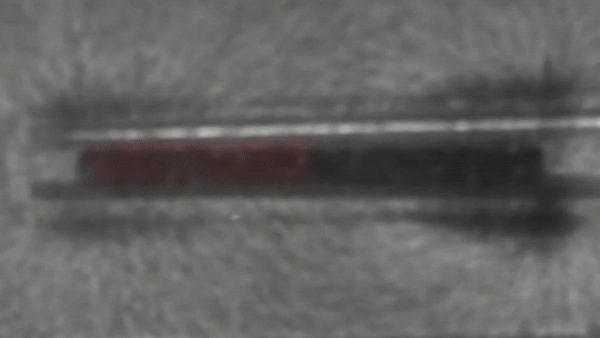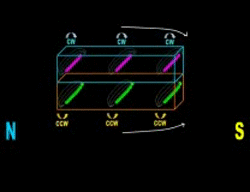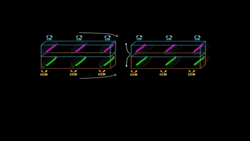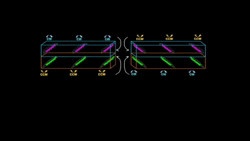One question many people want to have an answer to is how a magnet physically attracts another from a distance.
The first issue we must solve is whether there is a physical medium between the two magnets. If you believe that there isn’t one simply because you can’t see or touch it, you need to review the definition of object.
The second issue is that we can sprinkle iron filings over two magnets and they form a specific pattern. We refer to this invisible medium as a magnetic ‘field’. It is pertinent at this point to mention two individuals that studied magnets in quite a bit of detail.
“I cannot conceive curved lines of force without the conditions of a physical existence in that intermediate space.” Michael Faraday
“field… the space in the neighbourhood of the electric and magnetic bodies… in that space there is matter in motion” James Maxwell
Both Faraday and Maxwell concluded that the magnetic field was an exotic type of medium and that the lines of force that comprised it were real.
The third issue that we have to udnerstand is that the lines of force that comprise a magnetic field are not only real physical objects, but that they are swinging around the outside and all along the center of the magnet. A magnet that is placed underwater collects each iron filing one at a time.
The lines of force that swing around the magnet and comprise the magnetic field are the ones that pull one iron filing at a time under water.

Under the Rope Hypothesis, the lines of force are the threads that comprise the EM rope that interconnects any two atoms. It is these physical threads that comprise the invisible field that envelopes any magnet. The threads enter the traditional south pole and exit the north pole.
EM threads enter the south pole and exit the north pole of a magnet. These threads comprise the field of an ordinary magnet.

Looking at the following simulation, we see the south pole of the magnet on the right facing the north pole of the magnet on the left. In other words, both magnets are facing in the same direction: scanning from left to right, they are both facing north to south.
The threads of the top half of the south pole of the magnet on the left are moving clockwise (CW) and coming down.
The threads of the top half of the north pole of the magnet on the right are also circling CW.
As the threads of the south pole come down, those of the north pole come up. They latch onto each other and pull.
Meanwhile, the threads on the bottom halves of the magnets are doing exactly the opposite. The threads of the bottom half of the magnet on the left (south pole) are spinning counter-clockwise (CCW).
The threads on the bottom half of the magnet on the right (north pole) are also swinging CCW.
The threads on the left come up and latch onto the threads of those on the right which are coming down and pull.
The closer a magnet is to another, the more threads that participate because the threads have their origin in the atoms that comprise the magnets. The more threads, the stronger the tug.
Attraction

When we turn one of the magnets around 180º (in the example below, the one on the right), that magnet has now reversed the direction in which its threads swing.
The threads of the top half of the south pole of the magnet on the left are still moving (CW) and coming down.
However, the threads of the top half of the north pole of the magnet on the right are now circling CCW.
As the threads of the south pole come down, those of the north pole also come down. They push each other away.
Meanwhile, the threads of the bottom half of the magnet on the left (south pole) are still spinning CCW.
But the threads on the bottom half of the magnet on the right (also south pole) are now swinging CW.
The threads on both sides clash and push each other away.
The closer a magnet is to another, the more threads that participate, and the stronger the repulsion.
Repulsion
